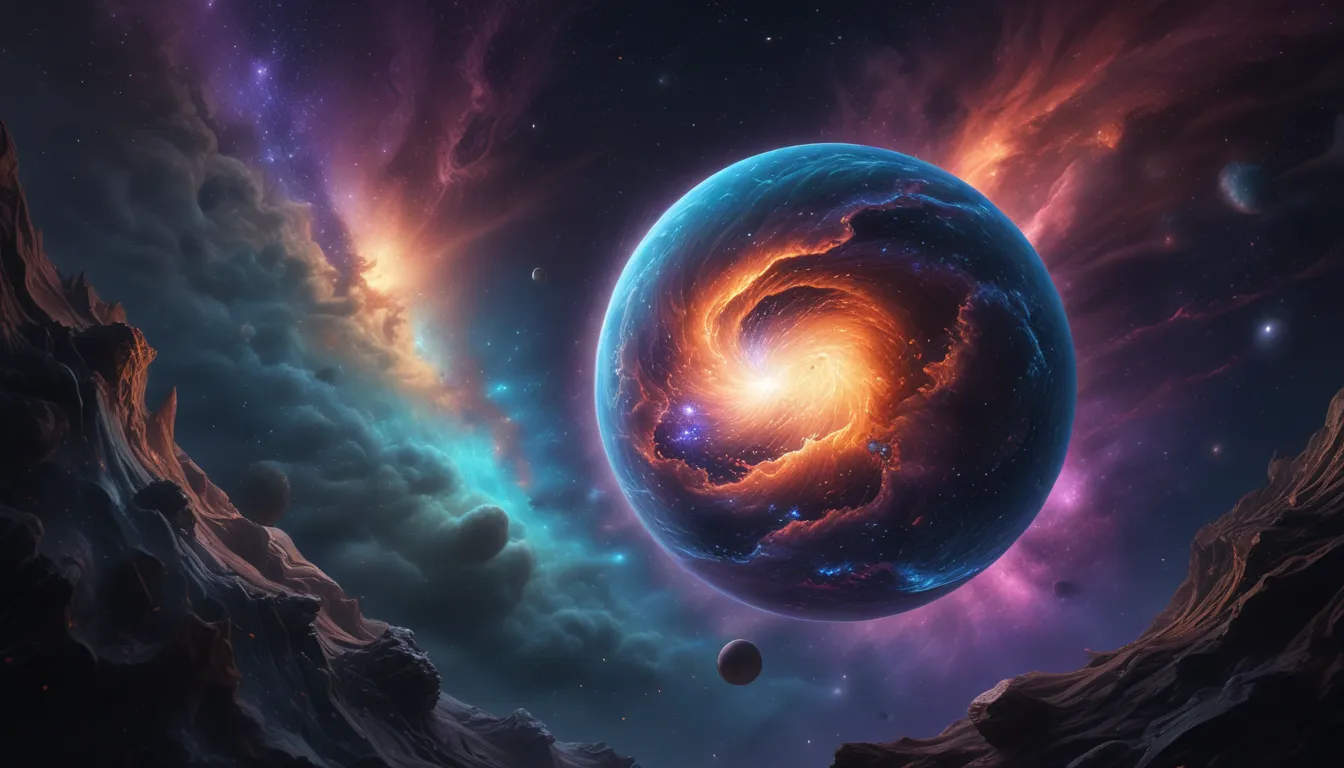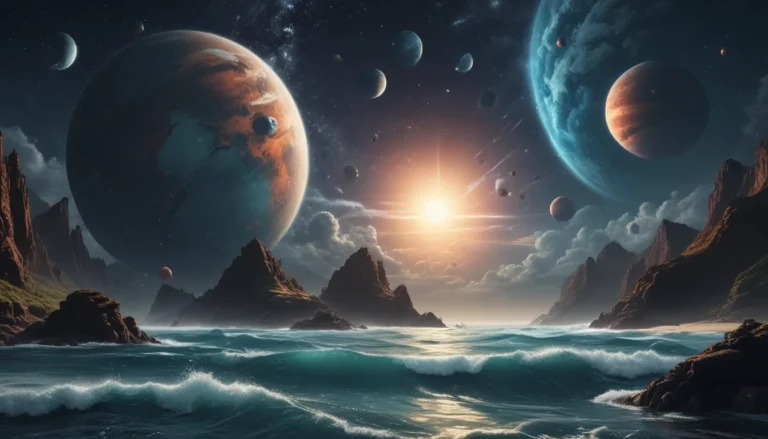The pictures we use in our articles might not show exactly what the words say. We choose these pictures to make you interested in reading more. The pictures work together with the words but don’t take their place. The words still tell you the important facts.
Have you ever wondered about the enigmatic celestial bodies that lurk in the vast expanse of space? Neutron stars, the remnants of massive stars that have undergone supernova explosions, are truly fascinating objects that continue to baffle scientists and astronomers alike. With their incredible density, powerful magnetic fields, and mind-bending properties, neutron stars offer a window into the extreme physics that govern our universe.
In this article, we will embark on a thrilling exploration of neutron stars, uncovering twelve fascinating facts that shed light on the mysteries of these cosmic powerhouses. From their ability to create heavy elements to their role as cosmic beacons in the darkness of space, neutron stars present a treasure trove of knowledge waiting to be discovered. So, fasten your seatbelts and get ready for an interstellar journey into the captivating world of neutron stars!
Delving into the Depths of Neutron Stars
Neutron stars are the remnants of massive stars that have exploded in spectacular supernova events, leaving behind incredibly dense cores. These stellar remnants pack a mass equivalent to 1.4 to 3 times that of our Sun into a sphere with a diameter of only about 12 miles. The density of neutron stars is so extreme that a teaspoon of their material would weigh millions of tons on Earth, highlighting the sheer compactness of these cosmic marvels.
Unveiling the Gravitational Pull of Neutron Stars
One of the most fascinating aspects of neutron stars is their powerful gravitational pull, which can be over a billion times stronger than Earth's gravity. This intense gravitational force leads to time dilation effects near the surface of neutron stars, causing time to run slower for objects in close proximity. The gravitational prowess of neutron stars creates a unique environment where the laws of physics are pushed to their limits.
Peering into the Magnetic Fields of Neutron Stars
Neutron stars boast some of the most intense magnetic fields in the universe, reaching up to a trillion times the strength of Earth's magnetic field. These magnetic fields play a significant role in shaping the behavior of matter in the vicinity of neutron stars, generating powerful electromagnetic radiation that illuminates the cosmos. The mesmerizing dance of charged particles under the influence of these magnetic fields offers a glimpse into the intricate interplay of forces in the universe.
Spinning Tales of Neutron Stars
Neutron stars exhibit a remarkable ability to spin at incredible rates, with some rotating hundreds of times per second. This rapid rotation is a consequence of the conservation of angular momentum during the collapse of massive stars, giving rise to the phenomenon of pulsars. Pulsating neutron stars emit beams of radiation that sweep across space like cosmic lighthouses, allowing scientists to study their properties and unravel the secrets of these celestial objects.
Unraveling the Secrets of Neutron Stars’ Heat
Despite their diminutive size, neutron stars radiate intense heat, with surface temperatures exceeding hundreds of thousands of degrees Celsius. This searing heat is a reminder of the violent processes that gave birth to neutron stars, including supernova explosions and stellar collapse. At the core of a neutron star lies even greater temperatures, potentially reaching billions of degrees Celsius, where matter exists in extreme states beyond our comprehension.
Detecting the Ripple of Gravitational Waves from Neutron Stars
Neutron stars have the remarkable ability to produce gravitational waves, subtle ripples in the fabric of spacetime that reverberate across the cosmos. When neutron stars merge or undergo irregular rotations, they emit gravitational waves that provide crucial insights into the nature of gravity and the structure of the universe. The detection of gravitational waves from merging neutron stars in 2017 marked a groundbreaking moment in astrophysics, opening new horizons for our understanding of the cosmos.
Forging Precious Elements in Neutron Star Collisions
The collision of two neutron stars gives rise to a cosmic forge where heavy elements like gold, platinum, and uranium are created. The extreme pressures and temperatures during these collisions synthesize rare elements that are dispersed into space, enriching the cosmos with valuable materials essential for life. Neutron star collisions serve as crucibles of creation, shaping the composition of galaxies and influencing the evolution of the universe.
Unveiling Exotic States of Matter within Neutron Stars
Within the core of a neutron star, matter is compressed to extraordinary densities, leading to the formation of exotic states of matter. Scientists speculate that the inner core of a neutron star consists of densely packed neutrons, while the outer layers may harbor exotic forms of matter such as quark-gluon plasma. These exotic states of matter challenge our understanding of the fundamental building blocks of the universe and offer a glimpse into the extreme conditions that exist within neutron stars.
Illuminating the Cosmos with Radiation Jets from Neutron Stars
Neutron stars have the ability to emit powerful jets of radiation from their magnetic poles, creating dazzling displays of energy across the electromagnetic spectrum. These radiation jets are generated when the intense magnetic fields of neutron stars accelerate charged particles to near-light speeds, producing high-energy emissions that illuminate the universe. Studying these radiation jets provides valuable insights into the behavior of matter under extreme conditions and enriches our understanding of the cosmos.
Unveiling the Crust of Neutron Stars
While the core of a neutron star is composed of incredibly dense matter, the outer layers form a solid crust that plays a crucial role in shaping the properties of the star. This solid crust consists of a lattice of atomic nuclei embedded in a sea of free electrons, creating a unique environment where matter interacts under extreme pressures. The presence of a crust adds another layer of complexity to the already enigmatic nature of neutron stars, highlighting the diversity of structures within these celestial objects.
Guiding the Way as Cosmic Beacons: The Role of Pulsars
Neutron stars known as pulsars, with their bright emissions and regular pulses of radiation, serve as cosmic beacons that guide astronomers through the depths of space. These pulsating signals provide astronomers with valuable tools to study the properties of space, measure the passage of time with exquisite precision, and test theories of gravity in extreme environments. Pulsars illuminate the universe with their rhythmic signals, offering a unique perspective on the workings of the cosmos.
Deciphering the Universe through Neutron Stars
The study of neutron stars offers unparalleled insights into the fundamental properties of matter, the structure of the universe, and the physics of extreme conditions. By unraveling the mysteries of neutron stars, scientists gain a deeper understanding of gravity, nuclear physics, and astrophysics as a whole. These celestial objects play a pivotal role in advancing our knowledge of the cosmos and shedding light on the profound mechanisms that govern the universe.
Embarking on a Cosmic Journey
Neutron stars stand as testaments to the cosmic wonders that captivate our imagination and challenge our understanding of the universe. From their extraordinary density to their powerful magnetic fields, neutron stars beckon us to delve into the complexities of the cosmos and unlock the secrets of the celestial realm. By exploring these compact stellar remnants, we embark on a journey of discovery that illuminates the intricate tapestry of the universe and unveils the grandeur of the cosmic ballet that unfolds in the depths of space.
As we continue to expand our knowledge and technological capabilities, the realm of neutron stars holds the promise of exciting new discoveries and groundbreaking revelations. The study of these cosmic powerhouses not only expands our understanding of the universe but also fuels our insatiable curiosity to explore the unknown frontiers of space. With each new revelation and each pulse of radiation from a neutron star, we draw closer to unraveling the mysteries that have long captivated humanity and inspired generations of explorers, scientists, and dreamers.
Discover More About Neutron Stars
Neutron stars continue to amaze and intrigue with their captivating properties and incredible phenomena. To delve deeper into the world of neutron stars, explore the mesmerizing events that unfold when neutron stars collide, unleashing powerful explosions that illuminate the cosmos. Learn about the cosmic forges where heavy elements essential for life are forged in the intense heat of neutron star collisions. Delve into the enigmatic realm of gamma-ray bursts and their connection to neutron stars, unraveling the mysteries of these high-energy cosmic events. Lastly, discover how cutting-edge space-based observatories are revolutionizing our understanding of neutron stars and the gravitational waves they produce. Prepare for an exhilarating journey through the wonders of neutron stars, where each discovery brings us closer to unraveling the secrets of the universe.
Delve into the Depths of Neutron Stars with Confidence
Do you find our exploration of neutron stars enlightening? Our commitment to delivering trustworthy and engaging content is at the core of our mission. Each fact shared on our platform is contributed by real users like you, bringing a wealth of diverse insights and information to light. Our dedicated editors meticulously review each submission to ensure the highest standards of accuracy and reliability, guaranteeing that the facts we share are not only fascinating but also credible. Trust in our unwavering commitment to quality and authenticity as you embark on your journey of discovery through the wonders of neutron stars and the cosmic marvels that await.
By immersing ourselves in the mysteries of neutron stars, we embark on a quest for knowledge that transcends the boundaries of space and time. Through the lens of science and exploration, we unravel the intricate tapestry of the universe and glimpse the profound interconnectedness of all cosmic phenomena. Neutron stars serve as beacons of light in the vast darkness of space, guiding us towards a deeper understanding of the cosmos and our place within it. Join us on this cosmic journey of discovery, where each revelation brings us closer to the heart of the universe and the mysteries that lie beyond.
FAQs About Neutron Stars
- What is a neutron star?
-
A neutron star is a highly dense celestial object that forms after a massive star undergoes a supernova explosion. The core collapses under intense gravitational forces, compressing matter to such a degree that atomic nuclei are crushed together, resulting in a neutron-rich remnant.
-
How dense are neutron stars?
-
Neutron stars are incredibly dense, with densities reaching several times that of an atomic nucleus. A teaspoon of neutron star material would weigh billions of tons on Earth, highlighting the extreme compactness of these cosmic remnants.
-
Can anything escape the intense gravity of a neutron star?
-
Only a small fraction of matter that falls onto a neutron star can escape its intense gravity, in the form of jets or radiation. Anything that gets too close will be pulled in and crushed by the overwhelming gravitational forces at work.
-
What happens to the magnetic field of a neutron star?
-
During the collapse of a massive star, the magnetic field of the core gets amplified, resulting in an extremely powerful magnetic field in the neutron star. These magnetic fields play a crucial role in various astrophysical phenomena associated with neutron stars, shaping their behavior and interactions with the surrounding cosmos.
-
Are there different types of neutron stars?
- Yes, there are several types of neutron stars, each exhibiting unique properties and behaviors based on factors such as rotational speed, magnetic field strength, and internal structure. Examples include pulsars, magnetars, and quark stars, each offering a distinct window into the cosmic wonders of neutron stars and their captivating nature.
Neutron stars stand as beacons of light in the vast darkness of space, pulsating with energy and secrets waiting to be unraveled. Join us on a journey through the cosmic wonders of neutron stars, where each discovery brings us closer to the heart of the universe and the enigmatic forces that shape the cosmos. Immerse yourself in the mysteries of neutron stars and embark on a quest for knowledge that transcends the boundaries of space and time. The universe awaits, ready to reveal its secrets to those who dare to explore its depths.
Are you ready to embark on a journey through the wonders of neutron stars? Join us as we unravel the mysteries of these cosmic marvels and discover the secrets that lie within the depths of the universe.






